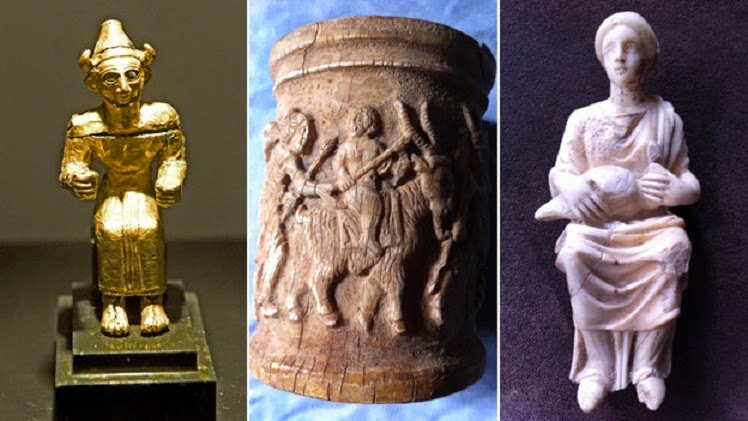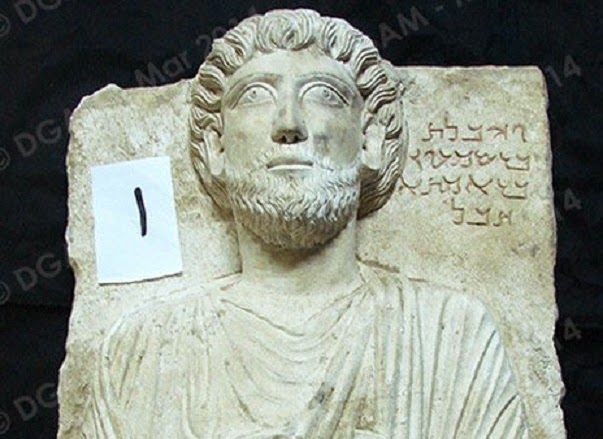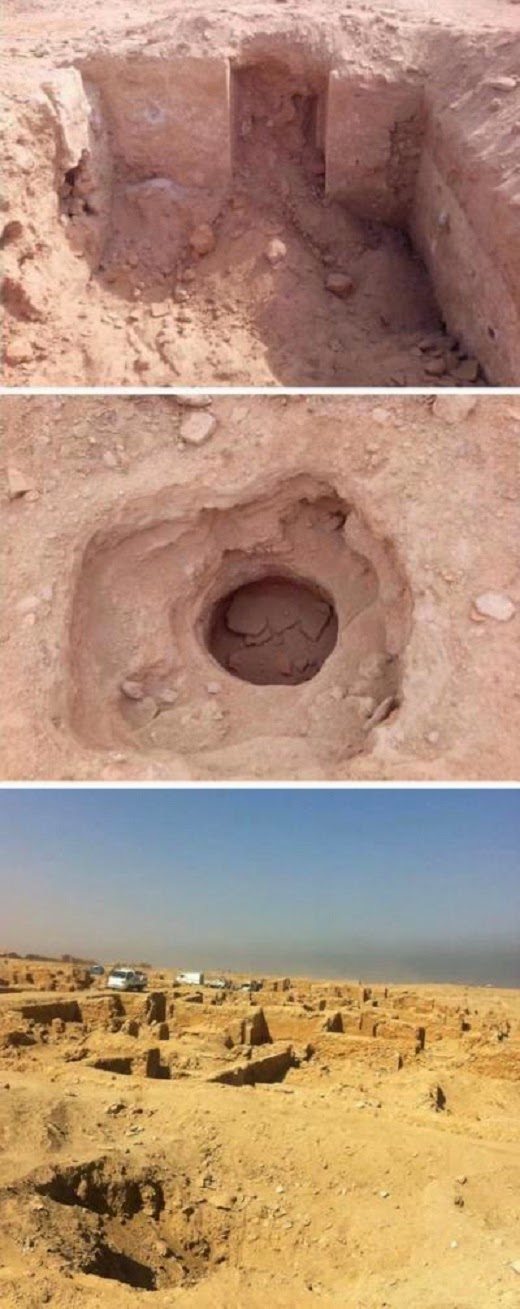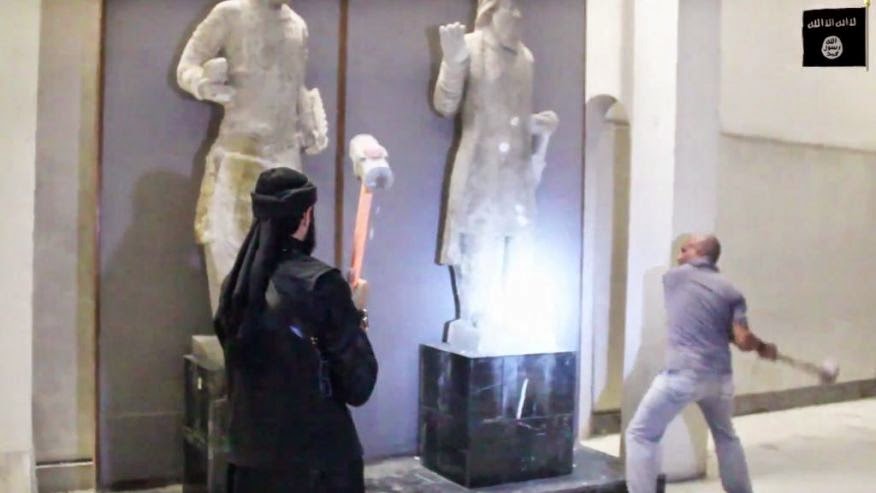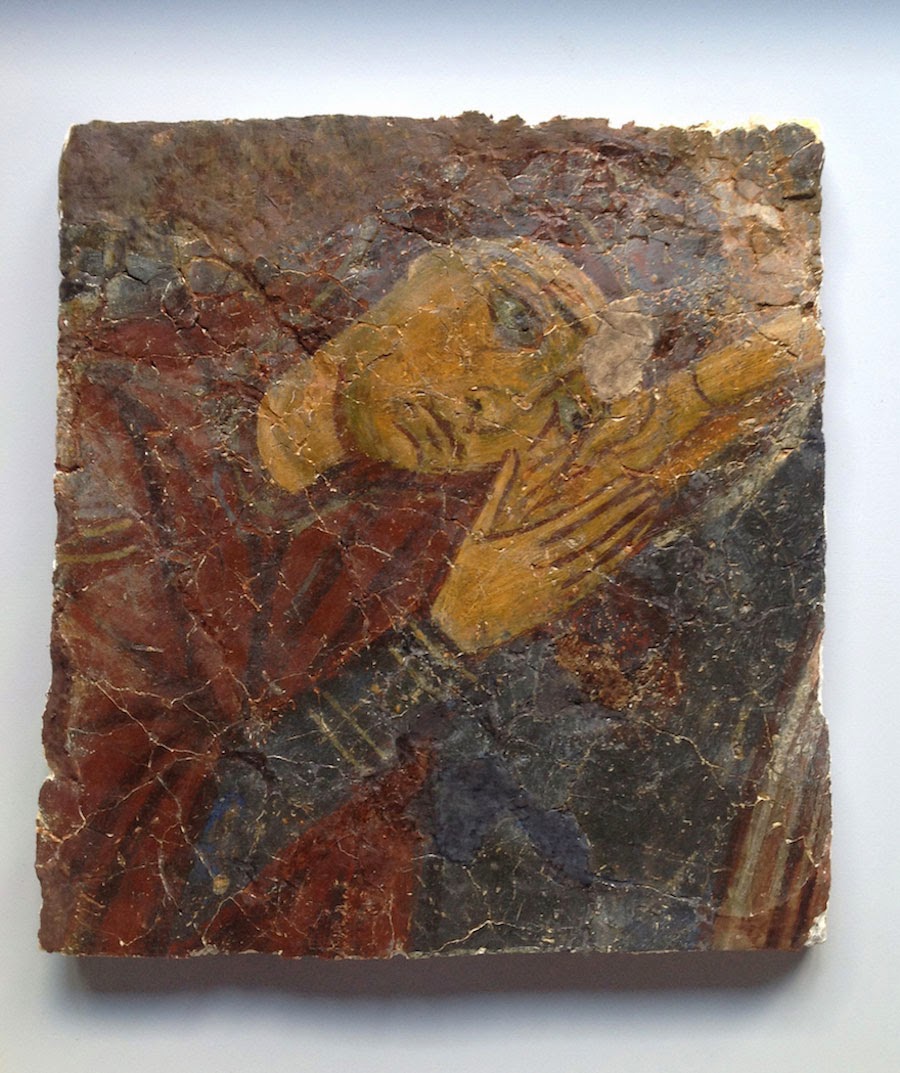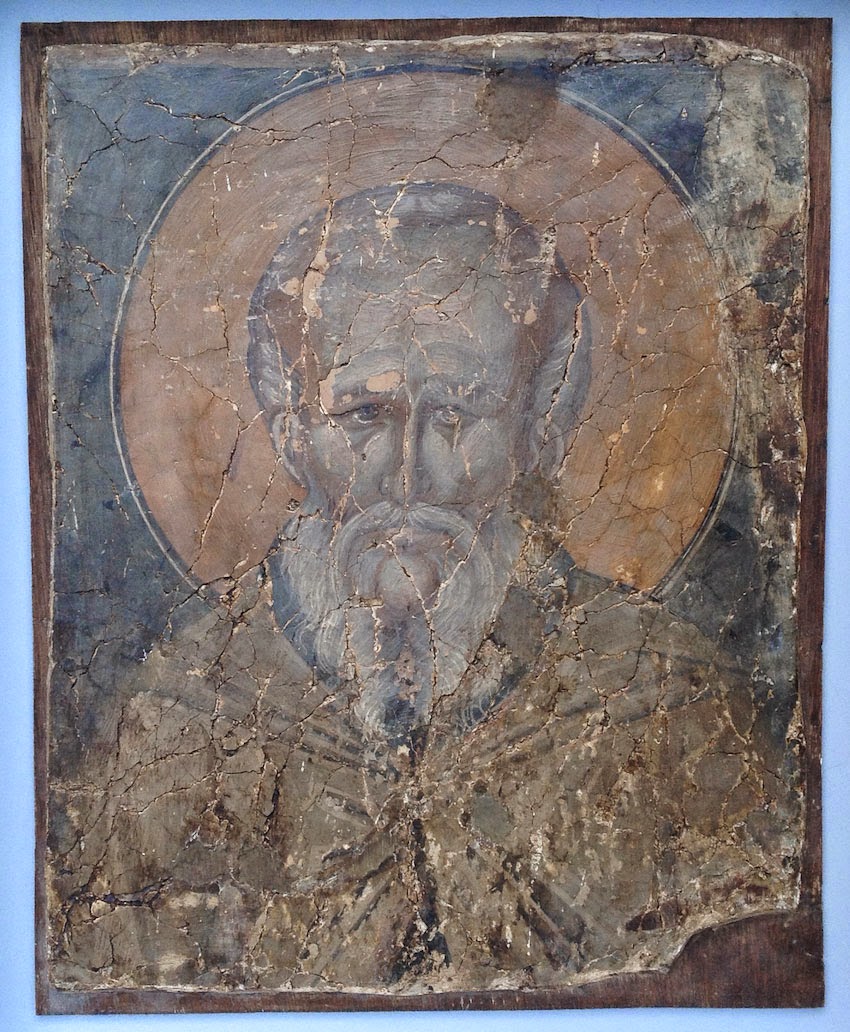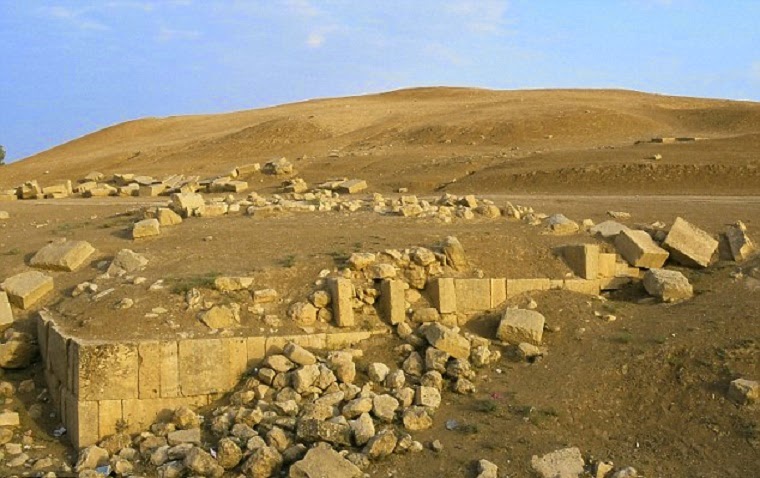
are displayed at the National Syrian Museum in Damascus, on April 23, 2008
[Credit: AFP/Louai Beshara]
Since his 2012 appointment as head of antiquities in the midst of Syria s civil war, Maamoun Abdulkarim says just one thing has been on his mind -- avoiding a repeat of the kind of looting that ravaged Iraq s heritage after the 2003 invasion.
"The images of the looting of the museum in Baghdad and other Iraqi sites are always on my mind, and I told myself that everything must be done to avoid a repeat of that here," he told AFP.
Widespread illegal excavation and the destruction of artefacts and religious sites by jihadists from the Islamic State (IS) group have only added to the sense of urgency.
Before the Syrian conflict began in 2011, Abdulkarim was co-director of a French-Syrian mission working excavating the 700 so-called Dead Cities of northern Syria, which date back to Roman and Byzantine times.

in the care of Syria authorities at the National Syrian Museum in Damascus,
on April 23, 2008 [Credit: AFP/Louai Beshara]
Syria has been the home of many civilisations over the millennia, from the Canaanites to the Ottomans, and is rich in both artistic and architectural treasures.
Since his appointment, Abdulkarim and his colleagues have worked to protect Syria s heritage from a conflict that has killed more than 215,000 people.
So far, they have wrapped and stored some 300,000 items and thousands of manuscripts in secret locations protected from fires, shelling and floods.
The pieces come from 34 museums, including 80,000 items from Damascus alone.
Perhaps the most dramatic rescue yet was from the eastern city of Deir Ezzor last August.

care of Syria authorities at the National Syrian Museum in Damascus,
on April 23, 2008[Credit: AFP/Louai Beshara]
After Mosul in neighbouring Iraq fell to IS in June, and the destruction began there, a decision was taken to evacuate the 13,000 artefacts remaining in Deir Ezzor.
Large parts of the city were in IS hands, but the airport and some districts remained under government control.
Yaarub al-Abdullah, the former director of antiquities for Deir Ezzor, said: "I worked for a week with two colleagues to wrap everything. We put it into a truck that came under heavy machinegun fire.
"We put the boxes on a military plane among dead and injured soldiers. It was terrible, but we managed it," added Abdullah, who now heads the National Museum.
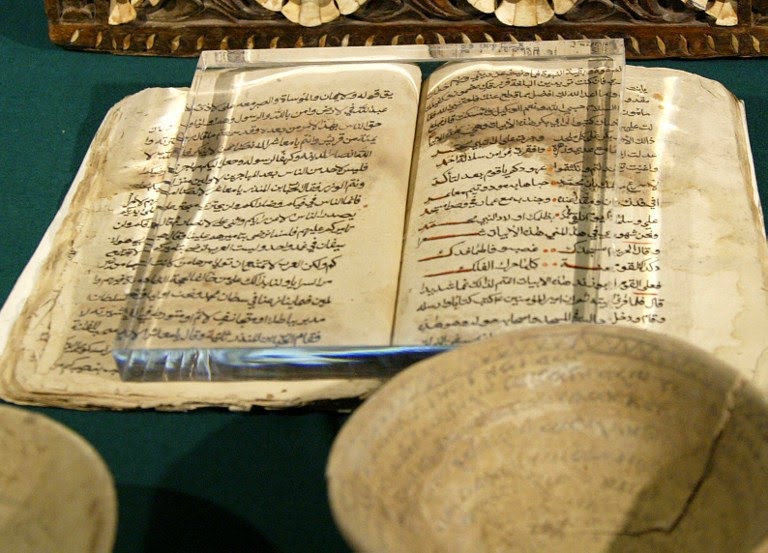
in the care of Syria authorities at the National Syrian Museum in Damascus,
on April 23, 2008 [Credit: AFP/Louai Beshara]
Back in Damascus, Abdulkarim followed the operation with trepidation.
"I didn t sleep for a week after I took the decision to evacuate the artefacts," he said.
"If the plane had crashed, I would have lost three friends and gone to prison for losing 13,000 items," he said, with a smile.
He said an estimated 99 percent of Syria s museum collections had been preserved, thanks to his 2,500 employees, including those in opposition-held areas.
"They feel that protecting our heritage is a question of honour, like defending the honour of their mothers," Abdulkarim said.
But their work has come with a price: around a dozen of them have been killed in the conflict, including five during the course of their work.
Despite their best efforts, Abdulkarim fears thousands of artefacts have already been stolen across the country.
Even worse is the damage that has been done to 300 sites and 445 historic buildings.
In some cases the damage came in fighting. In others, it has come from illegal excavation, even with bulldozers, in places like Mari, Doura Europos, Apamee and Ajaja in the northeast, the Yarmuk valley in southern Daraa, and Hamam near Raqa in the north.
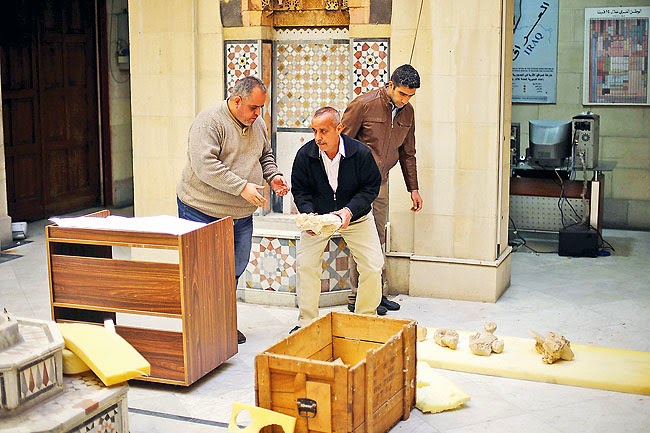
them from being damaged on March 24 in the Syrian capital
[Credit: AFP/Joseph Eid]
Ayham al-Fakhry, 39, fled his post as director of antiquities in Raqa in 2012, and laments the irreversible losses to Syria s rich heritage.
"Not only do you have the barbarity of the IS jihadists who destroy any representation of humans and Muslim mausoleums, but also the greed of mafia groups coming from Lebanon, Iraq and Turkey to buy pieces found by local residents," he said.
"They pay IS 20 percent of the estimated value and then the mafias take the objects to be sold in Europe or the Gulf," he said.
Despite international action to prevent smuggling antiquities from Syria, Abdulkarim and his colleagues say sanctions on Damascus have left them isolated.
"We felt like we had the plague," he said."Can there be an embargo on heritage? It belongs to the whole world."

them from being damaged on Tuesday in the Syrian capital
[Credit: AFP/Joseph Eid]
Recently though, there have been signs of change, with invitations to Germany and France for directorate staff and an award in Venice for their work.
Abdulkarim urged the international community to rally around those in Syria trying to save their heritage.
"There must be a international mobilisation to save culture and civilisation. It s not just our responsibility, but a collective one," he said.
Author: Sammy Ketz | Source: AFP [March 27, 2015]
